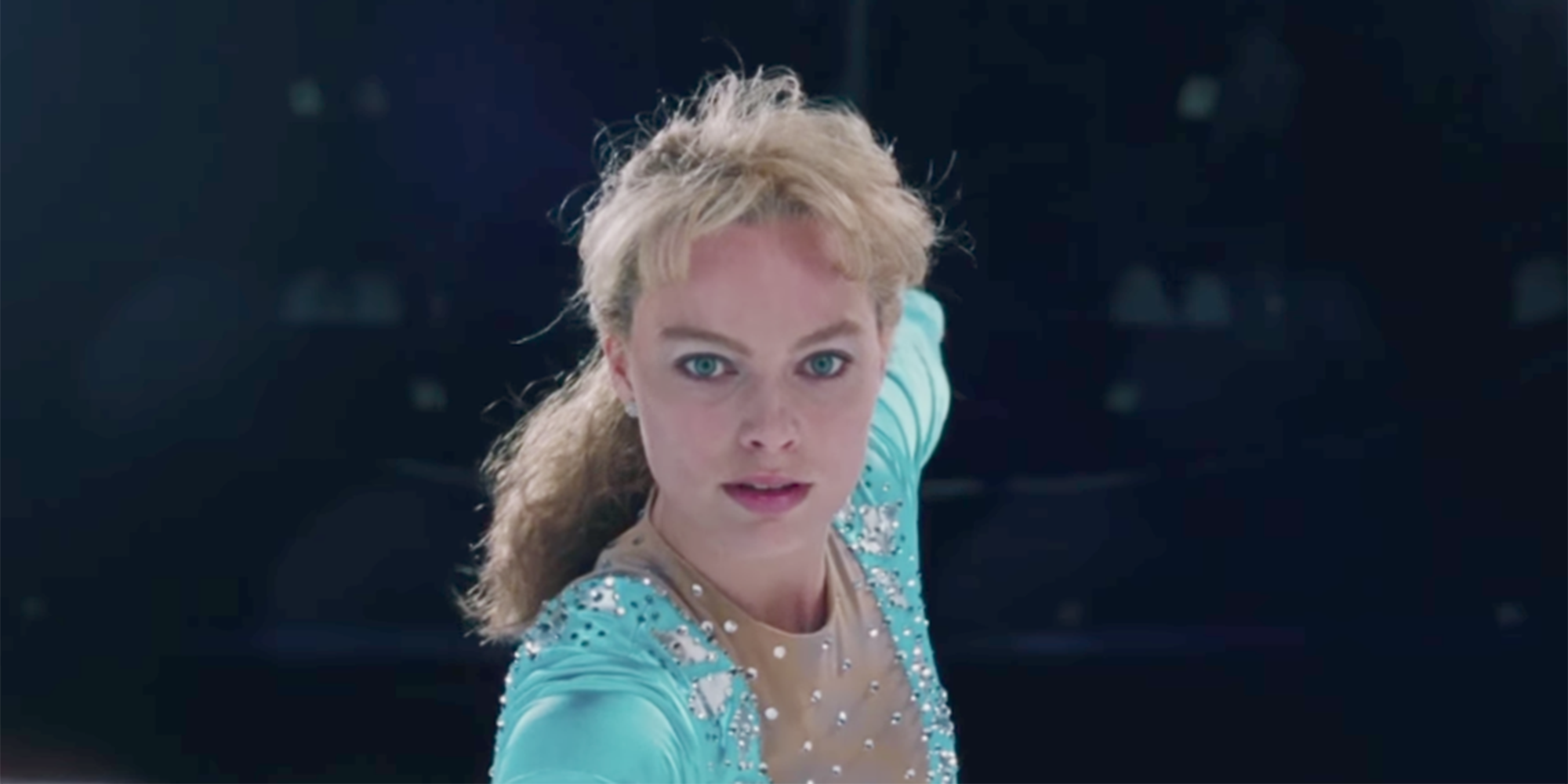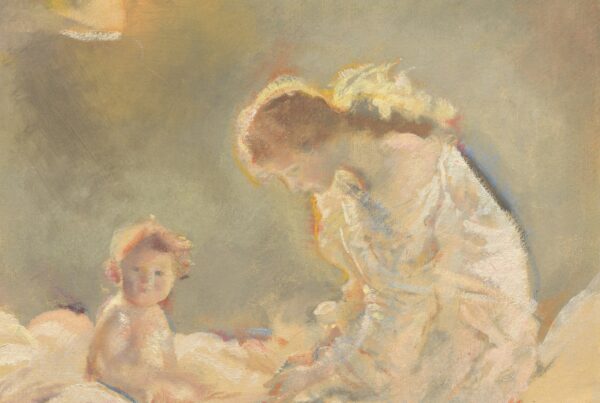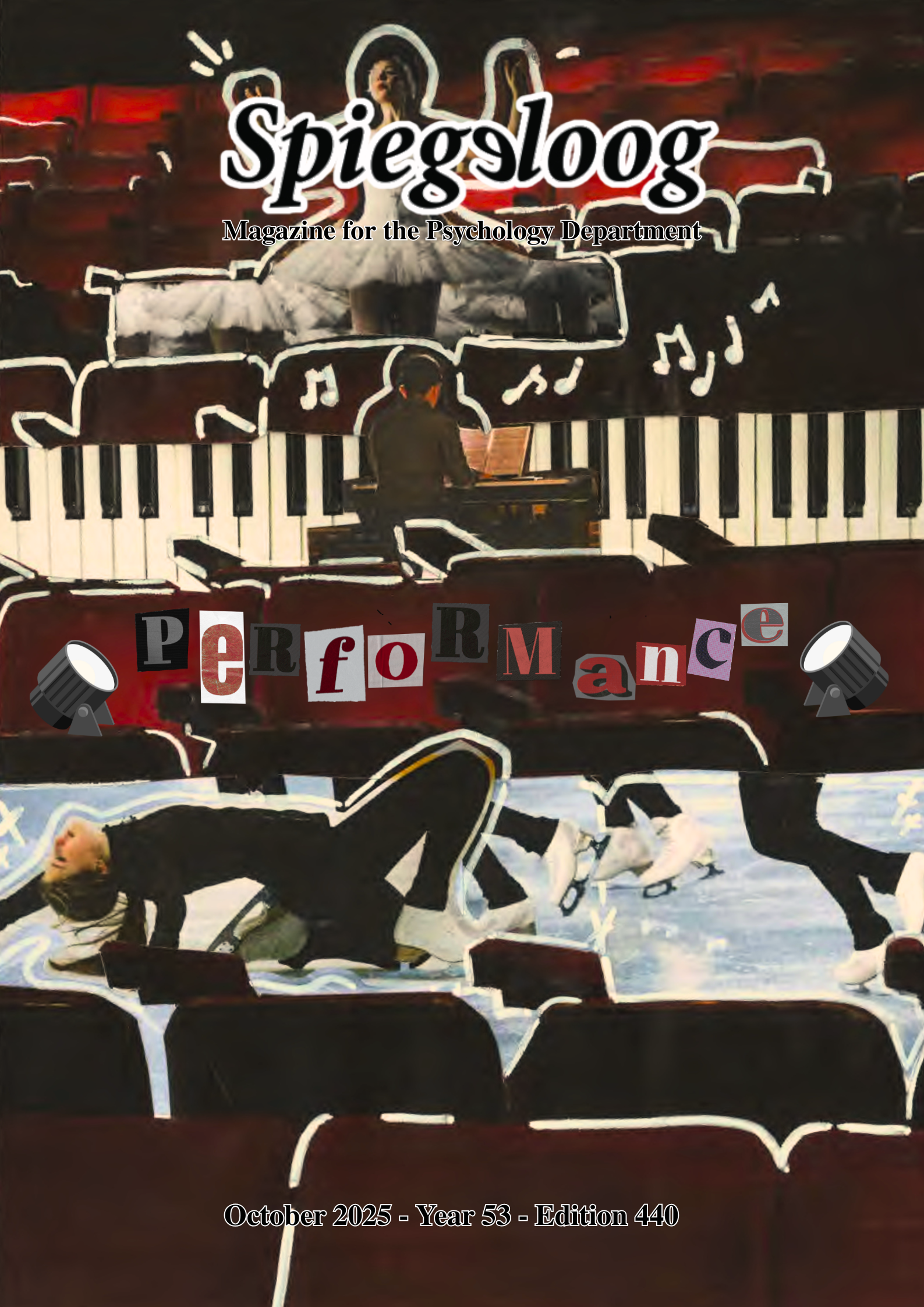
In 1994, American Olympic figure skater Tonya Harding made news headlines all around the world after an assault on rival skater Nancy Kerrigan. Tonya was heavily villainized by the media for her alleged involvement and responsibility for the crime. Craig Gillespie’s movie I, Tonya (2017) challenges this narrative by presenting a complex psychological portrait of how early trauma and social pressures shaped Tonya’s life. The following analysis aims to explore the part that skating played in Tonya’s personal development. Although Harding is a real person, this discussion addresses only her portrayal within the movie I, Tonya.
In 1994, American Olympic figure skater Tonya Harding made news headlines all around the world after an assault on rival skater Nancy Kerrigan. Tonya was heavily villainized by the media for her alleged involvement and responsibility for the crime. Craig Gillespie’s movie I, Tonya (2017) challenges this narrative by presenting a complex psychological portrait of how early trauma and social pressures shaped Tonya’s life. The following analysis aims to explore the part that skating played in Tonya’s personal development. Although Harding is a real person, this discussion addresses only her portrayal within the movie I, Tonya.

Photo taken from I, Tonya

Photo taken from I, Tonya
From early childhood until her adult life, Tonya is portrayed in the film to have been exposed to intense verbal, psychological, and physical abuse from her mother. She did not respect her daughter’s basic necessities, such as wanting to go to the bathroom, and made her wet herself in the ice rink. She would call her “stupid”, “useless”, and “a whore”, claiming she was treating her like this to make her better at skating. Additionally, her parents fought often and eventually her father disappeared from her life. These patterns of abuse and neglect in Tonya’s childhood can be understood through the frame of adverse childhood experiences. The term adverse childhood experiences (ACE) is defined by Felitti et al. (1998) as three kinds of stress-inducing adversities children may encounter in their home environment that can negatively affect brain development and increase the risk of chronic health problems, mental illness, and substance use in adulthood. These three types of adversity—physical and emotional abuse, neglect, and household dysfunction—were all faced by Tonya.
Research suggests that adverse childhood experiences negatively correlate with self-esteem in adolescents (Yan et al., 2024). This relationship is clearly reflected in Tonya’s behavior: in the movie, Tonya’s lack of self-esteem becomes apparent in the fact that, in her mother’s words, “she gets married to the first guy who says she’s pretty”. Tonya got married quite young to an older man who brutally physically abused her. In line with what her mother told her and how she treated her throughout her life, she felt like she was not deserving of another type of love. In the film, Tonya says “My mom hits me, and she loves me” and “I thought it was my fault, that’s just what I knew” when referring to being beaten by her spouse, like she was by her mother before him. Her entering an abusive marriage is in line with the findings of a study by Jezl et al. (1996), who concluded that a lack of self-esteem negatively correlates with enduring a higher level of abuse in domestic violence. Parent aggression can shape a child’s normative belief about violence— that is, the extent to which the child thinks aggression is reasonable or acceptable (Huesmann & Guerra, 1997b). Similarly, Tonya, like many other people who were abused during their childhood, carried abusive relationships into adulthood; because of her lack of self-esteem and her normative beliefs, she was more tolerant to higher violence levels and that threshold became difficult to surpass.
“A dandelion is a person who, like the flower, manages to survive and “flourish” in harsh conditions.”
Tonya not only had a hard time at home, but she was also met with social challenges on the ice rink. Competitive figure skating is known to be a sport that puts a lot of weight on appearances. The skaters have to represent perfection, elegance, and refinement, both in their personal life and on the rink. This includes the skating itself but also appearance, costumes, and makeup, among others. Tonya’s family didn’t have much money and she couldn’t afford to buy fancy costumes. In the movie, a judge told her that skaters had to represent the “perfect, happy American family”, to which she replied that she didn’t have a family like that. What’s more, this pressure from the skating community to portray a perfect life could have reinforced Tonya staying in her abusive marriage, since a divorce would have worsened her public image.
Despite the hardships she endured throughout her childhood, Tonya was still able to achieve excellence in her discipline. The punches she took (both literally and figuratively) and swimming against the social current somehow didn’t take her down. In contrast, according to the ACE study previously mentioned (Felitti et al., 1998), experiences like these can lead to all types of health disorders: depression, suicide attempts, alcoholism, and heart disease among others. Tonya emerged relatively unharmed from her adversity even though, according to the study results previously discussed, the health impact of her circumstances was expected to be much worse. Even though her self-esteem suffered, which most definitely affected her adult relationships, she was, all things considered, resilient to the harm of her difficulties.
“I, Tonya reminds us that greatness can emerge from struggle, and that understanding someone’s complexity and dimensionality is key to seeing their humanity.”
Tonya Harding is what we in the field of psychology refer to as a dandelion. A dandelion is a person who, like the flower, manages to survive and “flourish” in harsh conditions (Boyce, 2019b). Although Tonya had self-esteem issues, she managed to be successful without support or much stability. Research suggests that performing well in front of others is positively associated with improvements in self-esteem (Baumeister et al., 2003). So, despite having detrimental life experiences that tainted her self-image, Tonya found refuge in skating, something she was deeply passionate about and knew she excelled at. She knew she wasn’t all bad because she was among the best ice skaters in the world. In fact, Tonya was the first American to ever land a triple Axel jump in competition, an impressive accomplishment in the world of figure skating, since the jump requires reaching significant height and rotational speed (Princiotti, 2018) which entails great strength and precise technique. While every other aspect of her life was crumbling, skating provided a sense of stability and accomplishment. This way, we see that skating served as a protective factor against the traumatic events in Tonya’s life; a safe haven that allowed her to grow.
The conflict presented in the movie is the infamous attack on Nancy Kerrigan. Nancy, one of the skaters who competed against Tonya in the American league, was unexpectedly beaten with a baton below one of her knees after practice, which left her badly bruised and unable to compete the following days. The two men who attacked her were hired by a friend of Tonya’s ex-husband; the four of them confessed to plotting the attack before the police, but also said Tonya knew about and agreed to the attack. In the film Tonya always claimed to have no knowledge of the assault, so the only thing she was guilty of was having surrounded herself with violent people. But then again, as argued in this article, that isn’t necessarily her fault. In the movie, Tonya says a line that perfectly describes the point the film tries to make: “I’m not some monster, I’m just trying to do my best with what I know how to (do)”. Tonya wasn’t evil, she didn’t want Nancy to suffer. All she ever wanted was to be at the top, to do the only thing she knew how to do: skating.
Tonya Harding’s life illustrates how childhood trauma, abusive relationships, and social rejection can shape personal development, while also showing how passion and talent can serve as tools to build self-worth and resilience, counteracting the effects from adverse childhood experiences. Far from the villain she was cast to be, Harding was truly a victim of her circumstances. I, Tonya reminds us that greatness can emerge from struggle, and that understanding someone’s complexity and dimensionality is key to seeing their humanity.
References
Baumeister, R. F., Campbell, J. D., Krueger, J. I., & Vohs, K. D. (2003). Does high Self-Esteem cause better performance, interpersonal success, happiness, or healthier lifestyles? Psychological Science in the Public Interest, 4(1), 1–44. https://doi.org/10.1111/1529-1006.01431
Boyce, W. T. (2019b). The Orchid and the Dandelion: Why Some Children Struggle and how All Can Thrive. Knopf Publishing Group.
Felitti, V. J., Anda, R. F., Nordenberg, D., Williamson, D. F., Spitz, A. M., Edwards, V., Koss, M. P., & Marks, J. S. (1998). Relationship of childhood abuse and household dysfunction to many of the leading causes of death in adults. American Journal of Preventive Medicine, 14(4), 245–258. https://doi.org/10.1016/s0749-3797(98)00017-8
Gillespie, C. (Director). (1979). I, Tonya . [Film] LuckyChap Entretainment
Huesmann, L. R., & Guerra, N. G. (1997). Children’s normative beliefs about aggression and aggressive behavior. Journal of Personality and Social Psychology, 72(2), 408–419. https://doi.org/10.1037/0022-3514.72.2.408
Jezl, D. R., Molidor, C. E., & Wright, T. L. (1996). Physical, sexual and psychological abuse in high school dating relationships: Prevalence rates and self-esteem issues. Child and Adolescent Social Work Journal, 13(1), 69–87. https://doi.org/10.1007/bf01876596
Princiotti, N. (2018, February 21). What is a triple axel? And why is it so hard for figure skaters to pull off? Boston.com. https://www.boston.com/sports/olympics/2018/02/12/what-triple-axel-and-why-so-hard/
Yan, Y., Zhang, J., & Lu, N. (2024). Adverse childhood experiences and self‐esteem among adolescents: The role of social capital and gender. Journal of Adolescence. https://doi.org/10.1002/jad.12361
From early childhood until her adult life, Tonya is portrayed in the film to have been exposed to intense verbal, psychological, and physical abuse from her mother. She did not respect her daughter’s basic necessities, such as wanting to go to the bathroom, and made her wet herself in the ice rink. She would call her “stupid”, “useless”, and “a whore”, claiming she was treating her like this to make her better at skating. Additionally, her parents fought often and eventually her father disappeared from her life. These patterns of abuse and neglect in Tonya’s childhood can be understood through the frame of adverse childhood experiences. The term adverse childhood experiences (ACE) is defined by Felitti et al. (1998) as three kinds of stress-inducing adversities children may encounter in their home environment that can negatively affect brain development and increase the risk of chronic health problems, mental illness, and substance use in adulthood. These three types of adversity—physical and emotional abuse, neglect, and household dysfunction—were all faced by Tonya.
Research suggests that adverse childhood experiences negatively correlate with self-esteem in adolescents (Yan et al., 2024). This relationship is clearly reflected in Tonya’s behavior: in the movie, Tonya’s lack of self-esteem becomes apparent in the fact that, in her mother’s words, “she gets married to the first guy who says she’s pretty”. Tonya got married quite young to an older man who brutally physically abused her. In line with what her mother told her and how she treated her throughout her life, she felt like she was not deserving of another type of love. In the film, Tonya says “My mom hits me, and she loves me” and “I thought it was my fault, that’s just what I knew” when referring to being beaten by her spouse, like she was by her mother before him. Her entering an abusive marriage is in line with the findings of a study by Jezl et al. (1996), who concluded that a lack of self-esteem negatively correlates with enduring a higher level of abuse in domestic violence. Parent aggression can shape a child’s normative belief about violence— that is, the extent to which the child thinks aggression is reasonable or acceptable (Huesmann & Guerra, 1997b). Similarly, Tonya, like many other people who were abused during their childhood, carried abusive relationships into adulthood; because of her lack of self-esteem and her normative beliefs, she was more tolerant to higher violence levels and that threshold became difficult to surpass.
“A dandelion is a person who, like the flower, manages to survive and “flourish” in harsh conditions.”
Tonya not only had a hard time at home, but she was also met with social challenges on the ice rink. Competitive figure skating is known to be a sport that puts a lot of weight on appearances. The skaters have to represent perfection, elegance, and refinement, both in their personal life and on the rink. This includes the skating itself but also appearance, costumes, and makeup, among others. Tonya’s family didn’t have much money and she couldn’t afford to buy fancy costumes. In the movie, a judge told her that skaters had to represent the “perfect, happy American family”, to which she replied that she didn’t have a family like that. What’s more, this pressure from the skating community to portray a perfect life could have reinforced Tonya staying in her abusive marriage, since a divorce would have worsened her public image.
Despite the hardships she endured throughout her childhood, Tonya was still able to achieve excellence in her discipline. The punches she took (both literally and figuratively) and swimming against the social current somehow didn’t take her down. In contrast, according to the ACE study previously mentioned (Felitti et al., 1998), experiences like these can lead to all types of health disorders: depression, suicide attempts, alcoholism, and heart disease among others. Tonya emerged relatively unharmed from her adversity even though, according to the study results previously discussed, the health impact of her circumstances was expected to be much worse. Even though her self-esteem suffered, which most definitely affected her adult relationships, she was, all things considered, resilient to the harm of her difficulties.
“I, Tonya reminds us that greatness can emerge from struggle, and that understanding someone’s complexity and dimensionality is key to seeing their humanity.”
Tonya Harding is what we in the field of psychology refer to as a dandelion. A dandelion is a person who, like the flower, manages to survive and “flourish” in harsh conditions (Boyce, 2019b). Although Tonya had self-esteem issues, she managed to be successful without support or much stability. Research suggests that performing well in front of others is positively associated with improvements in self-esteem (Baumeister et al., 2003). So, despite having detrimental life experiences that tainted her self-image, Tonya found refuge in skating, something she was deeply passionate about and knew she excelled at. She knew she wasn’t all bad because she was among the best ice skaters in the world. In fact, Tonya was the first American to ever land a triple Axel jump in competition, an impressive accomplishment in the world of figure skating, since the jump requires reaching significant height and rotational speed (Princiotti, 2018) which entails great strength and precise technique. While every other aspect of her life was crumbling, skating provided a sense of stability and accomplishment. This way, we see that skating served as a protective factor against the traumatic events in Tonya’s life; a safe haven that allowed her to grow.
The conflict presented in the movie is the infamous attack on Nancy Kerrigan. Nancy, one of the skaters who competed against Tonya in the American league, was unexpectedly beaten with a baton below one of her knees after practice, which left her badly bruised and unable to compete the following days. The two men who attacked her were hired by a friend of Tonya’s ex-husband; the four of them confessed to plotting the attack before the police, but also said Tonya knew about and agreed to the attack. In the film Tonya always claimed to have no knowledge of the assault, so the only thing she was guilty of was having surrounded herself with violent people. But then again, as argued in this article, that isn’t necessarily her fault. In the movie, Tonya says a line that perfectly describes the point the film tries to make: “I’m not some monster, I’m just trying to do my best with what I know how to (do)”. Tonya wasn’t evil, she didn’t want Nancy to suffer. All she ever wanted was to be at the top, to do the only thing she knew how to do: skating.
Tonya Harding’s life illustrates how childhood trauma, abusive relationships, and social rejection can shape personal development, while also showing how passion and talent can serve as tools to build self-worth and resilience, counteracting the effects from adverse childhood experiences. Far from the villain she was cast to be, Harding was truly a victim of her circumstances. I, Tonya reminds us that greatness can emerge from struggle, and that understanding someone’s complexity and dimensionality is key to seeing their humanity.



